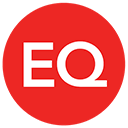 Andrew Woolnough
Director, HR Solutions, EQ
Andrew Woolnough
Director, HR Solutions, EQ
These expectations have been gradually spilling over into our increasingly multi-cultural and multi-generational workplaces, Although it’s probably safe to say that most organisations struggled to articulate a strong ‘why’ – in terms of pounds and pence at least (board language) So the ‘how’ became very disjointed, sporadic and rarely acted upon. The pandemic is changing all of that.
Arguably, governance reform is helping change things in no small way too, ensuring that employee voice is captured and acted upon at boardroom level. But it’s taken the pandemic to make many employers realise that the wellbeing of people is pivotal to business success. And the wellbeing of people will only be realised where the workforce feels listened to, understood, and where feedback is demonstrably acted upon.
3 steps to focus on
So, now to the ‘how’; how to take an evidence-based approach to understanding and prioritising employees’ wellbeing needs.
1. Be clear on what the business is trying to achieve; zoom in on priorities
Employee wellbeing represents a massive area and is impacted by pretty much everything in a business, from management practices, training and development, to the actual work environment. Rome wasn’t built in a day…and neither was employee wellbeing.
Right now, research shows that nine in 10 CEOs are focused on conducting wellbeing initiatives, according to PwC’s CEO Panel Survey (2020). In line with this, Employee Benefits’, Benefits Research (May 2020), found a top HR priority is to better target employee benefits with a view to maximising usage and value.So, why not start there.
2. Consider various ways to gain employee insights
There’s a fine balance when it comes to insight gathering, because you don’t want to end up so bogged down in data that you cannot see the wood for the trees. But neither do you want to just rely on one source, which doesn’t really tell you much at all; generally the once a year employee satisfaction survey. By all means use that survey, but also substitute with other useful sources related to benefits and your overall goals: absence statistics, benefit usage data from providers, engagement surveys, formal focus groups and informal discussions, for example.
3. Segment your audience to better design benefit programmes and communication
Gaining regular employee insight, as outlined above, is essential to ensuring your existing benefit programme is fit for purpose and communicated in a way that is likely to help your people rationally understand what’s on offer. For example, at EQ we use Amplify Insight – this geodemographic tool combines real-world data with workplace data. In other words it looks at actual benefit usage and overlays that information with external sources based on themes such as demographics, behaviour, lifestyle and geography. This gives employers far-reaching insights about their employee base; insights that you can use to see who’s using which benefits and why; who’s not using certain benefits when really they should because they’d gain value from them. And who’s not being served at all by the current benefit programme and why.
This rich information – combined with the type of insights outlined in point two above – will help you understand your employees’ wellbeing needs in a way that you will never have experienced before. This allows you to prioritise, design and communicate in a way that is entirely evidence-based, targeted and, ultimately, future-proof.
*This article was written for, and features in REBA, January 2020.

